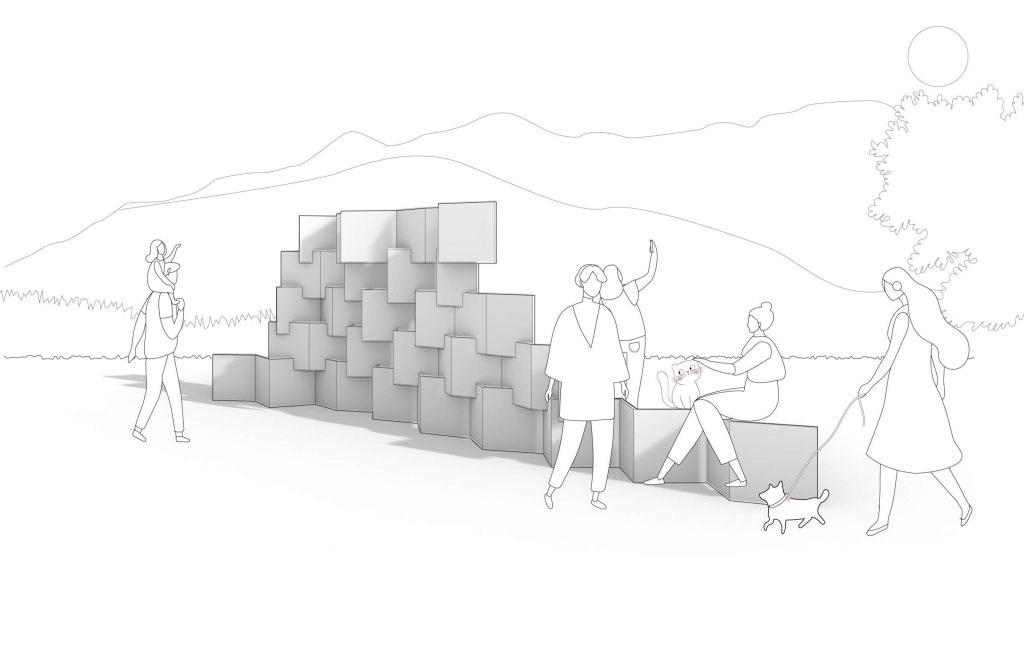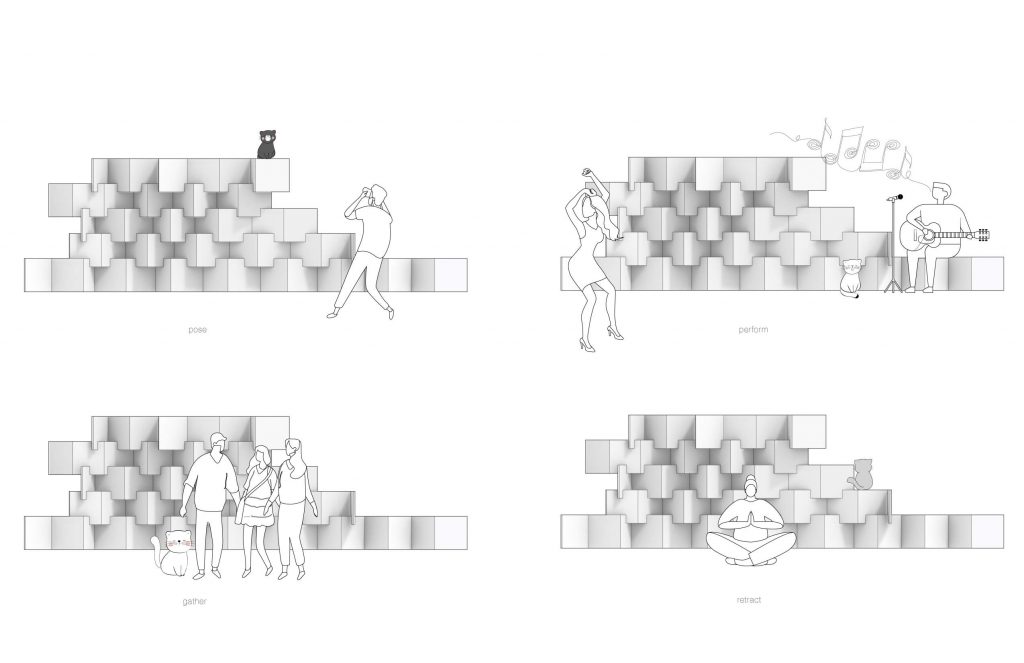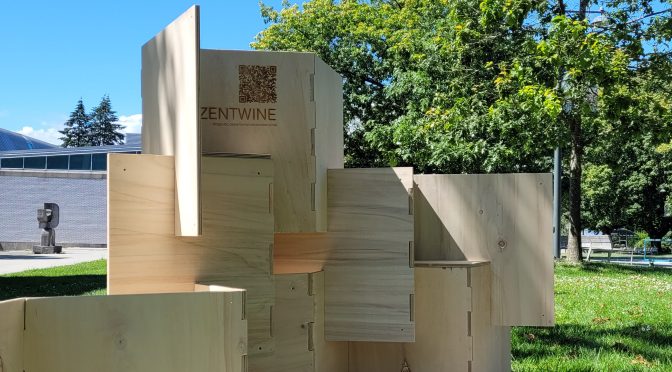“Zentwine” is a part of a series of projects made for the ARCH 571 Performative Wood course, offered by UBC’s School of Architecture and Landscape Architecture (SALA). The physical built component installed in front of the Frederic Lasserre building is only a small portion of the full model meant to demonstrate the conceptual logic behind the design.
Instructor:
Annalisa Meyboom
Designers:
Carissa Tzeng
Kenneth Anggara
Sahar Kazemeini

Project full dimensions:
L * D * H = 7700mm * 2800mm * 2107mm
Actual built dimensions of the component:
L * D * H = 2130mm * 580mm * 1308mm
Zentwine aims to explore assembly and fabrication techniques of timber allowed by the technologies of robot milling and parametric design methods. This structure is constructed by stacking zig-zagging rows of wooden panels, forming an elegant curving and weaving form where the individual rectangular units intertwine and interlock. The geometry is first analyzed using Grasshopper to get the data of each point on the geometry, which is then converted into a code understood by the milling robot. Using the KUKA robot’s 8-axis milling capabilities, the subtle changes in the intersection angles between each piece and the inconstant dimensions of each panel are made possible to fabricate, adding variance to the otherwise simple design logic.

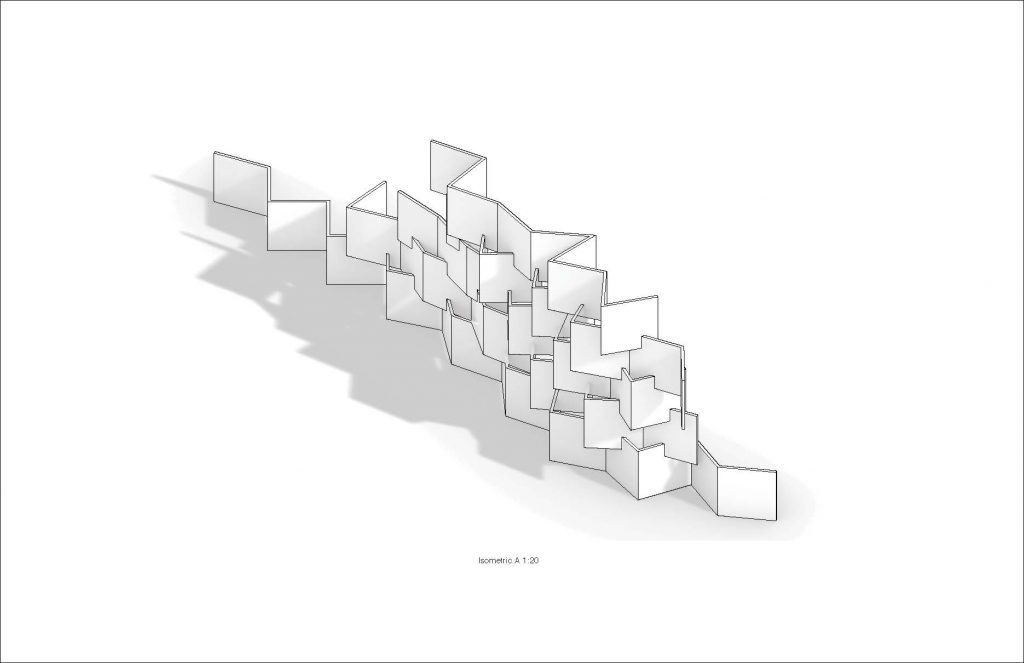

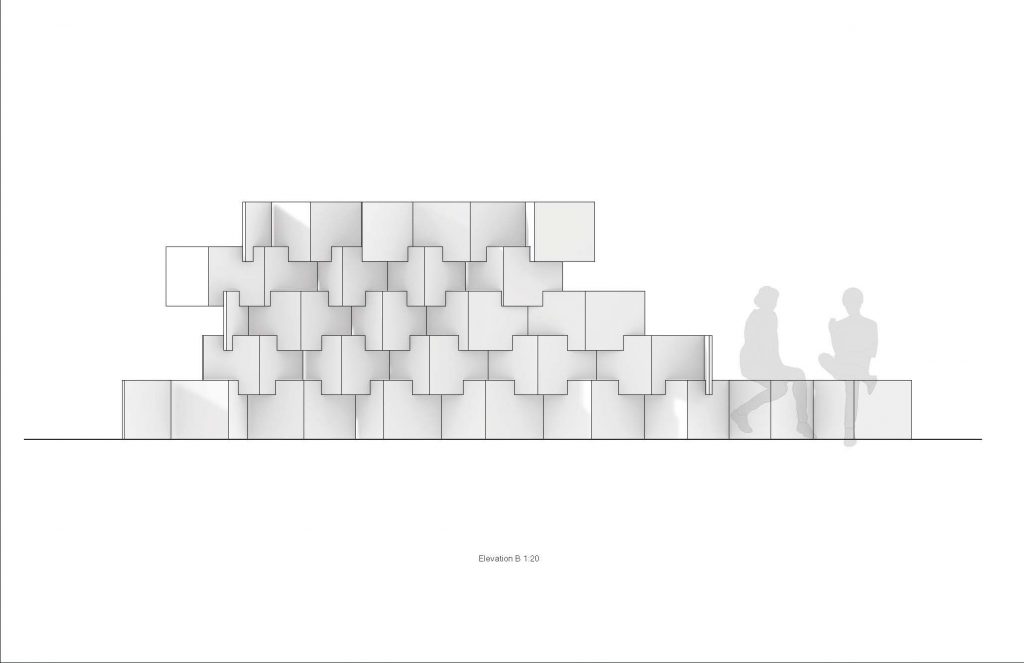

Two joinery methods are used in this project.
The one operating on the macro-level of the structure lies in the interlocking of planes vertically from row to row through a slot cut in between their intersecting areas.
The second method is applied on the micro-level at the position where two discrete panels meet latitudinally as box joints (finger joints).
The precise milling from the robot ensures that each piece fits tightly and accurately with one another. In addition, these joining strategies allow the structure to be mono-materialistic where only wood is needed in its construction with no metal components necessary (except for the steel threaded rod anchoring the structure to the ground).

The hope of Zentwine is, at its full scale, to create a peculiar aesthetic space where people can gather and socialize. Potential interactions can manifest in the form of people relaxing in the shade created by the 2m-high wall, people sitting on the seating installed into the zig-zagging form, or even just brief conversations generated from the strangers passing by and pausing upon seeing the structure. We project for Zentwine to start discussions and educate people about robotic fabrication as well as set up a space where social activities from different individuals can congregate and intertwine with one another.
